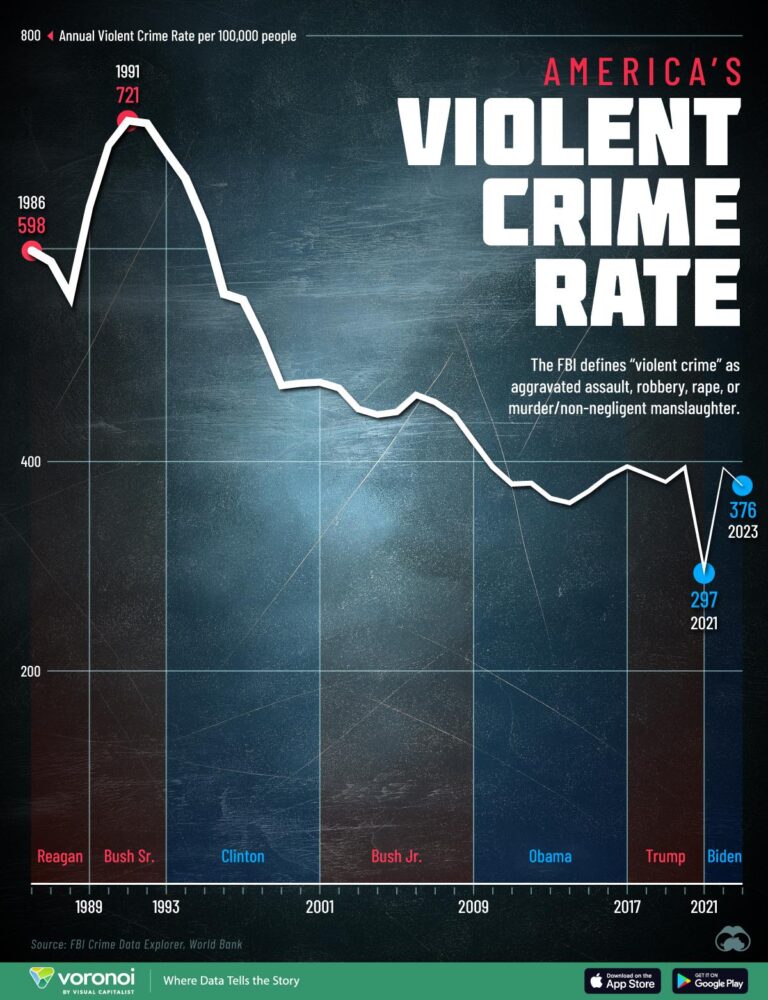Analyzing the 2023 Violent Crime Landscape Across U.S. States: Trends, Causes, and Solutions
Overview of Violent Crime Patterns in the United States for 2023
Recent statistics from Statista for 2023 highlight pronounced differences in violent crime rates across various U.S. states. These figures encompass offenses such as homicide, robbery, and aggravated assault, revealing distinct regional patterns and shifts compared to prior years. Such data is invaluable for government officials, law enforcement, and citizens aiming to understand and combat crime effectively. This article provides an in-depth examination of state-level violent crime data, exploring emerging trends and their implications for public safety.
State-by-State Variations in Violent Crime Rates
The 2023 violent crime data exposes stark contrasts among states, reflecting diverse challenges in maintaining public safety. While some states have experienced marked decreases in violent offenses, others, especially in metropolitan hubs, continue to see rising crime rates. Analysts link these disparities to factors such as economic health, policing strategies, and community involvement initiatives.
Noteworthy trends include:
- Elevated firearm-related violent crimes predominantly in Southeastern and Southwestern states.
- Noticeable declines in violent crime in several Northern and Midwestern states, attributed to enhanced law enforcement and community outreach.
- Urban centers consistently report higher violent crime rates than rural areas, although some rural regions have unexpectedly seen increases.
| State | Violent Crime Rate (per 100,000 residents) | Year-over-Year Change (2022-2023) |
|---|---|---|
| Louisiana | 750 | +8.5% |
| Iowa | 220 | -5.3% |
| California | 500 | +3.1% |
| Minnesota | 270 | -7.0% |
Note: Violent crime rates include murder, rape, robbery, and aggravated assault per 100,000 inhabitants.
Underlying Causes of State-Level Crime Rate Differences
Multiple factors contribute to the uneven distribution of violent crime across states in 2023. Economic disparities remain a primary driver, with states experiencing higher poverty and unemployment rates often reporting more violent incidents. Urbanization also plays a critical role; densely populated metropolitan areas tend to have elevated crime rates due to concentrated social and economic pressures. Furthermore, variations in law enforcement tactics and resource deployment influence crime prevention and reporting.
Additional influential elements include:
- Demographic makeup: Younger populations and diverse communities can impact crime trends differently.
- State legislation: Differences in gun control laws and criminal justice policies affect violent crime levels.
- Availability of social support: Access to education, mental health care, and community programs helps reduce violence.
| Factor | Effect on Violent Crime | Example |
|---|---|---|
| Economic Conditions | Higher poverty correlates with increased violent crime | Southeastern states exhibit elevated rates |
| Urban Density | More violent incidents in populous cities | Metropolitan areas in California and New York |
| Gun Policy | Stricter regulations linked to reduced gun violence | Comparison between Massachusetts and Alaska |
Socioeconomic Influences on Regional Crime Dynamics
Economic hardship significantly impacts violent crime rates in various regions. High unemployment, low household incomes, and limited educational opportunities often coincide with increased social unrest and crime. Communities facing these challenges frequently experience cycles of violence fueled by resource scarcity and social strain. For instance, states with persistently high joblessness tend to report more aggravated assaults and robberies, highlighting the link between economic instability and crime.
Conversely, states with stronger economic indicators generally report lower violent crime rates, although disparities can still exist within certain communities. Investments in housing, education, and social services are critical in reducing crime risks. The table below illustrates this relationship with selected state data:
| State | Median Household Income | Unemployment Rate (%) | Violent Crime Rate (per 100,000) |
|---|---|---|---|
| State X | $68,000 | 4.5 | 350 |
| State Y | $45,000 | 7.2 | 720 |
| State Z | $53,000 | 5.3 | 470 |
- Lower median incomes are associated with higher violent crime rates.
- Elevated unemployment consistently correlates with increased violent offenses.
- Targeted economic support programs contribute to crime reduction.
Strategic Policy Approaches to Mitigate Violent Crime Nationwide
Combating violent crime requires comprehensive strategies that extend beyond conventional policing. Investing in community-centered initiatives—such as mentorship programs for youth, expanded educational opportunities, and vocational training—addresses underlying causes like poverty and social exclusion. Enhancing mental health services and addiction treatment is equally vital, given the strong links between untreated psychological conditions and violent behavior. Policymakers should prioritize funding for these preventative efforts to cultivate safer communities.
Moreover, adopting data-driven law enforcement methods and fostering collaboration among agencies can improve crime response and resolution rates. Key policy focus areas include:
- Community Involvement: Strengthening neighborhood watch groups and public safety partnerships.
- Education and Workforce Development: Increasing access to skill-building and after-school programs.
- Healthcare Expansion: Broadening mental health and rehabilitation services.
- Technological Advancements: Leveraging predictive analytics for efficient resource deployment.
- Legal Reforms: Balancing sentencing policies to emphasize both deterrence and rehabilitation.
| Policy Domain | Potential Impact | Estimated Investment |
|---|---|---|
| Community Programs | High | Moderate |
| Mental Health Services | High | High |
| Data-Driven Policing | Moderate | Low |
| Legislative Reform | Moderate | Low |
Final Thoughts on Violent Crime Trends and Prevention
The 2023 violent crime statistics from Statista underscore the complex and varied nature of crime across the United States. Recognizing these patterns is essential for crafting effective policies and community initiatives aimed at reducing violence. Ongoing data analysis and adaptive strategies will be critical in fostering safer environments and addressing the root causes of violent crime nationwide.





